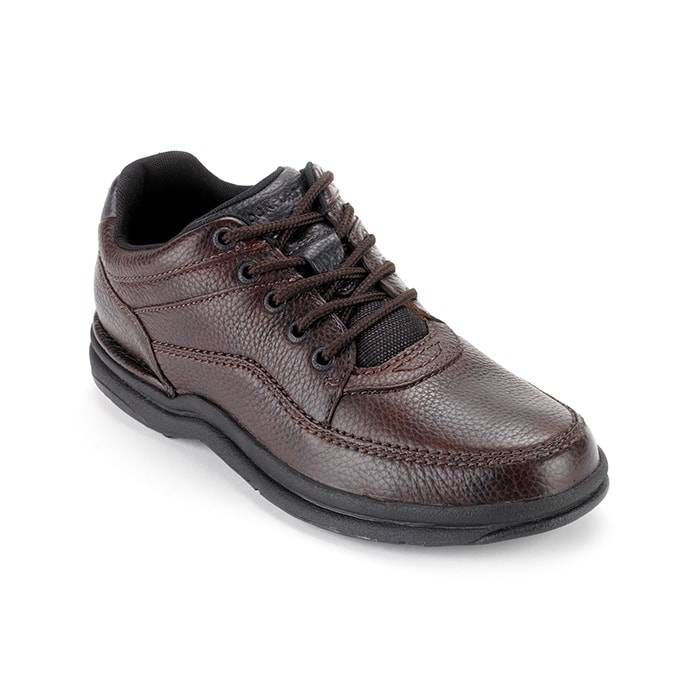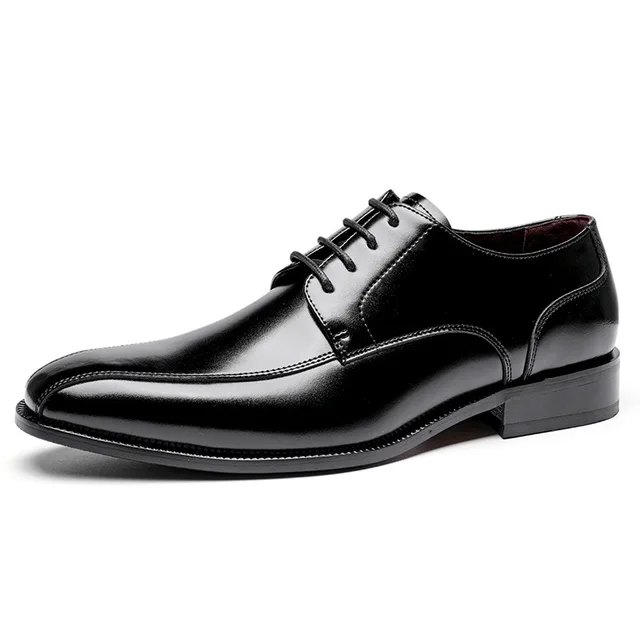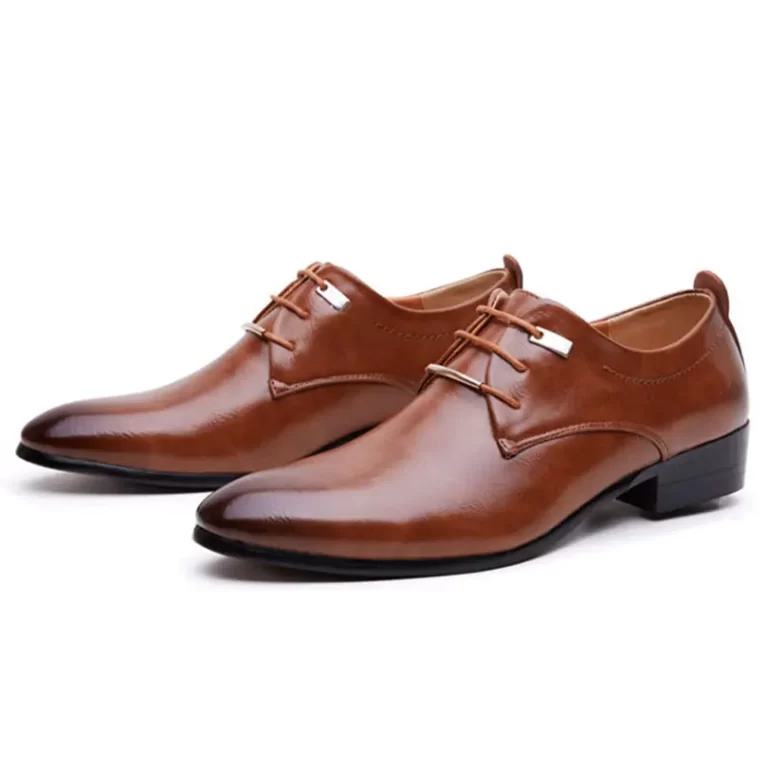Introduction
Plantar fasciitis is a common condition characterized by heel pain due to inflammation of the plantar fascia, the band of tissue running along the bottom of the foot. This discomfort can make choosing the right pair of dress shoes challenging, especially for individuals who need to maintain a professional appearance. This guide delves into the best features to look for in dress shoes for plantar fasciitis, how to find the right fit, and recommendations for stylish and supportive options.
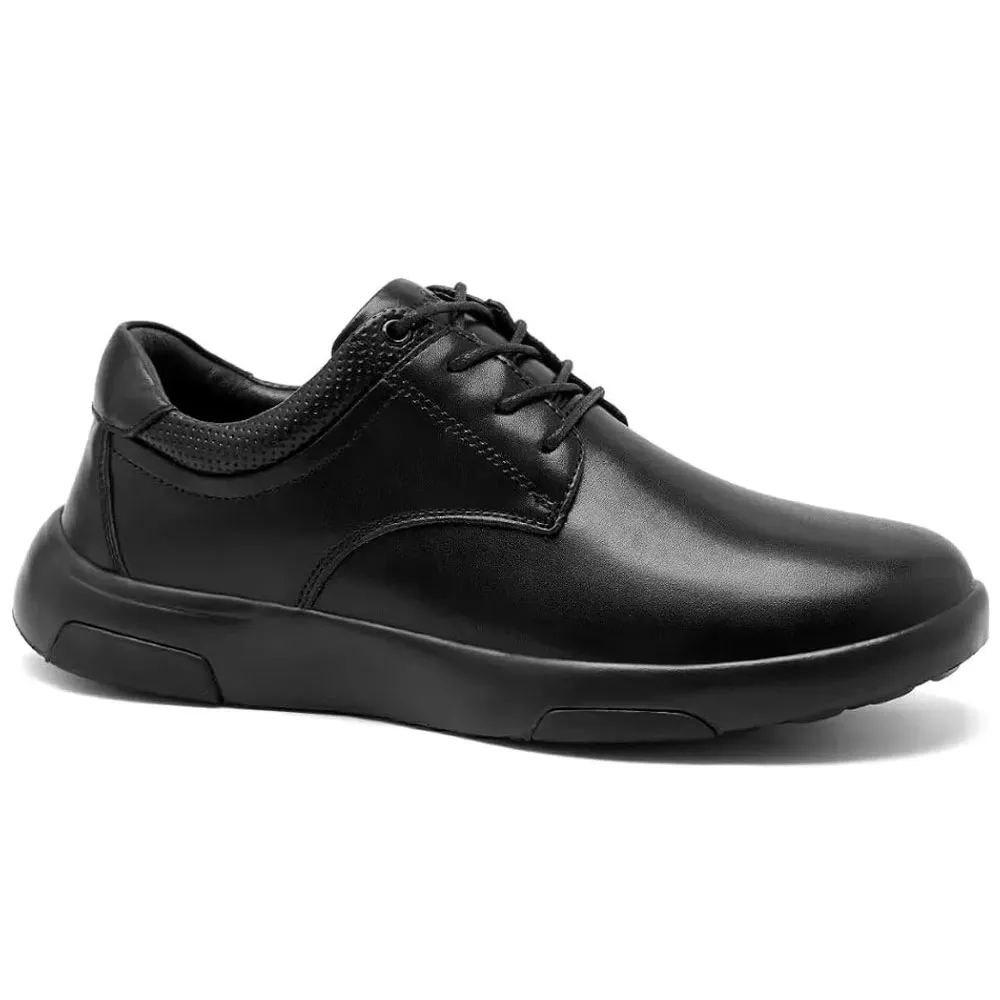
Understanding Plantar Fasciitis and Its Impact
What is Plantar Fasciitis?
Plantar fasciitis occurs when the plantar fascia, which supports the arch of the foot, becomes inflamed. This inflammation typically results from overuse, excessive pressure, or improper footwear. Symptoms often include sharp, stabbing pain in the heel, particularly with the first steps in the morning or after prolonged periods of rest. The condition can be debilitating and affect one’s daily activities, including professional engagements that require dress shoes.
How Plantar Fasciitis Affects Footwear Choices
The discomfort from plantar fasciitis necessitates careful consideration when choosing dress shoes. Traditional dress shoes often lack the support and cushioning needed for managing plantar fasciitis. Without proper arch support, cushioning, and shock absorption, the pain can worsen. Therefore, selecting shoes designed to alleviate pressure and provide adequate support is crucial.
Key Features to Look for in Dress Shoes for Plantar Fasciitis
Arch Support
One of the most critical features in dress shoes for plantar fasciitis is excellent arch support. Proper arch support helps distribute pressure evenly across the foot, reducing strain on the plantar fascia. Look for shoes with built-in arch support or the option to insert orthotic insoles. Some brands design their shoes with contoured footbeds that offer targeted arch support.
Cushioning and Shock Absorption
Cushioning is another essential element. Shoes with ample cushioning help absorb shock and reduce the impact on the heel. Look for shoes with cushioned insoles and midsoles made from materials like EVA foam or gel. These materials provide a soft, supportive surface that can make a significant difference in comfort.
Heel Height and Flexibility
Heel height and flexibility also play a role in managing plantar fasciitis. A lower heel height is generally better, as high heels can exacerbate the condition by increasing pressure on the forefoot and altering foot alignment. Opt for shoes with a heel height of 1 inch or less. Additionally, the shoe should have some flexibility to accommodate the natural movement of the foot without causing additional strain.
Finding the Right Fit
Measuring Your Feet
Proper fit is crucial when managing plantar fasciitis. Start by measuring your feet accurately. Feet can change size and shape over time, so measure them regularly. Use a foot measuring device or visit a professional to get precise measurements. Ensuring the right length and width will help avoid additional pressure points and discomfort.

Trying on Shoes with Your Orthotics
If you use orthotic insoles, try on shoes with them inserted. This will give you a better sense of how the shoe accommodates your specific needs. Ensure that the shoe has enough depth to accommodate both the insole and your foot comfortably. Pay attention to how the shoe feels when walking, as this can reveal potential issues with fit or support.
Checking for Proper Arch Alignment
When trying on dress shoes, check for proper arch alignment. The arch of the shoe should match the natural curve of your foot. Stand and walk around to ensure the shoe provides adequate support and doesn’t cause any discomfort. Shoes that lack proper arch alignment can exacerbate plantar fasciitis symptoms.
Top Recommendations for Dress Shoes
1. Clarks Unstructured Line
Clarks is well-known for its comfort-oriented designs. The Unstructured line offers excellent arch support and cushioning. These shoes feature a cushioned footbed and a flexible outsole, making them a good option for individuals with plantar fasciitis. The classic design ensures they remain suitable for professional settings.
2. Ecco Helsinki Slip-On
The Ecco Helsinki Slip-On combines style with functionality. It features a soft leather upper and a supportive footbed designed to reduce heel pain. The shoes offer ample cushioning and a low heel, making them a great choice for those needing both comfort and elegance.
3. Rockport Total Motion Dress Shoes
Rockport’s Total Motion line is designed with comfort in mind. These shoes include a cushioned midsole and a supportive footbed, ideal for managing plantar fasciitis. They also feature a sleek design, suitable for formal occasions while providing the support needed for long hours of wear.
4. Vionic Livia Loafer
Vionic’s Livia Loafer is known for its orthotic-grade arch support and cushioning. The shoe’s footbed is designed to relieve pressure and provide support throughout the day. Its classic loafer design ensures that it fits well in a professional wardrobe while addressing the needs of those with plantar fasciitis.
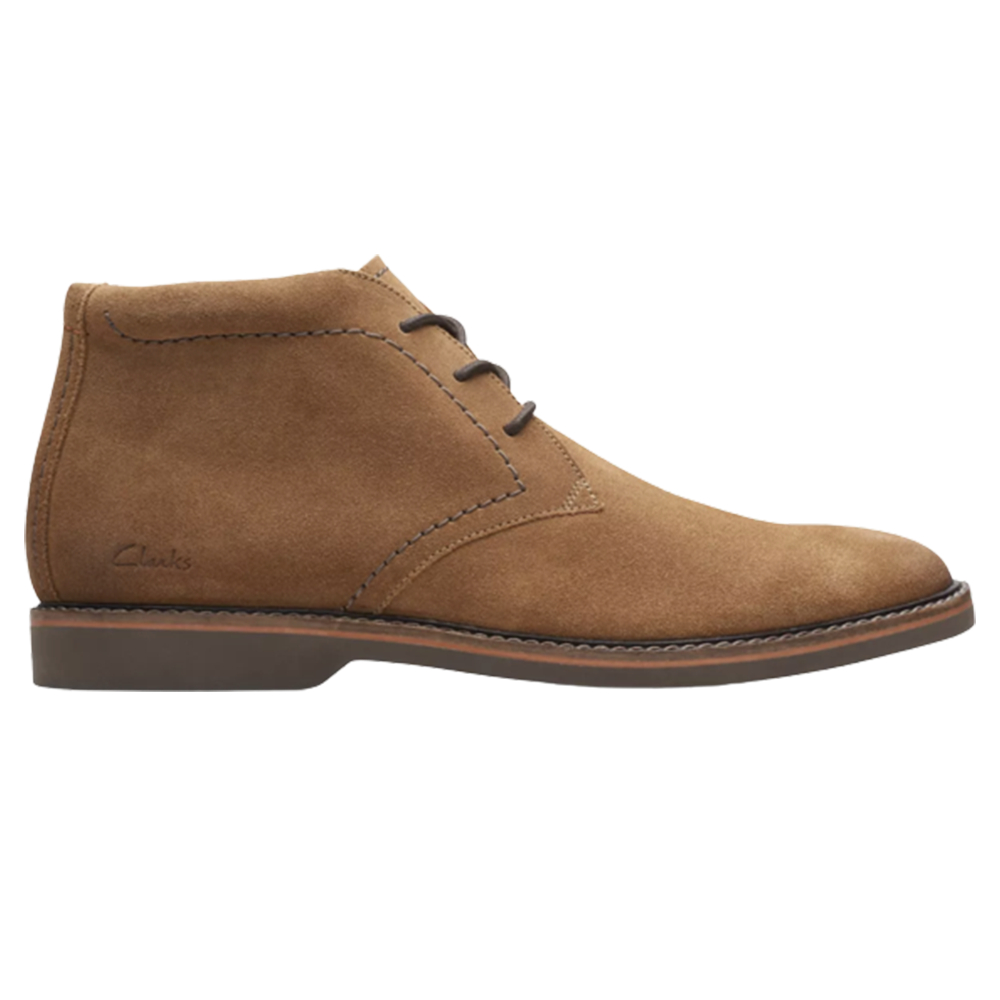
Maintaining and Caring for Your Dress Shoes
Proper Cleaning and Storage
To prolong the life of your dress shoes, proper maintenance is essential. Clean the shoes regularly using appropriate cleaners for the material (leather, suede, etc.). Store them in a cool, dry place, and use shoe trees to help maintain their shape. Regular care ensures that the shoes continue to provide the support and comfort needed.
Replacing Worn-Out Shoes
Even the best dress shoes will eventually wear out. Pay attention to signs of wear, such as reduced cushioning or visible damage. Replace worn-out shoes promptly to avoid aggravating plantar fasciitis symptoms. Investing in high-quality replacements ensures that you continue to receive the necessary support and comfort.
Using Orthotic Inserts
If your dress shoes do not come with adequate arch support, consider using orthotic inserts. These can be customized to provide additional support and cushioning. Ensure that the inserts fit well within the shoes and do not cause discomfort. Regularly check the condition of your orthotics and replace them as needed.
Style Versus Comfort: Finding the Balance
Professional and Stylish Options
Maintaining a professional appearance doesn’t mean sacrificing comfort. Many brands now offer dress shoes that balance style and support. Look for options that blend classic designs with modern comfort features. For example, some dress shoes have subtle, stylish designs while incorporating advanced cushioning and support technologies.
Alternatives to Traditional Dress Shoes
Consider exploring alternative styles that provide similar levels of professionalism and comfort. For instance, loafers and derby shoes often offer more flexibility and cushioning compared to traditional oxfords. These alternatives can still be appropriate for formal settings while offering enhanced comfort.
Custom and Bespoke Shoes
For those who struggle to find off-the-shelf shoes that meet their needs, custom or bespoke shoes might be worth considering. A professional shoemaker can create shoes tailored specifically to your foot shape and comfort requirements. This personalized approach ensures that every aspect of the shoe, from arch support to toe box space, is designed with your needs in mind.
Managing Plantar Fasciitis Beyond Footwear
Stretching and Exercises
Incorporate stretching exercises and routines to alleviate and prevent plantar fasciitis pain. Exercises such as calf stretches, toe stretches, and rolling the foot on a tennis ball can help relieve tension in the plantar fascia. Regular stretching can improve flexibility and reduce discomfort.
Weight Management
Maintaining a healthy weight can reduce the stress on your feet and lower the risk of aggravating plantar fasciitis. Excess weight puts additional pressure on the plantar fascia, so managing your weight through a balanced diet and regular exercise can be beneficial.
Professional Advice
Consult with a healthcare professional, such as a podiatrist or orthopedic specialist, for personalized advice and treatment options. They can provide recommendations on foot exercises, orthotics, and other strategies to manage plantar fasciitis effectively.
Conclusion
Selecting the right dress shoes for plantar fasciitis involves focusing on features like arch support, cushioning, heel height, and proper fit. With the right pair, you can manage your condition while maintaining a professional appearance. By understanding what to look for and taking care of your shoes, you can ensure comfort and support throughout your day. Explore options like Clarks, Ecco, Rockport, and Vionic to find the perfect pair for your needs. Investing in well-designed dress shoes will make a significant difference in managing plantar fasciitis and maintaining foot health.
